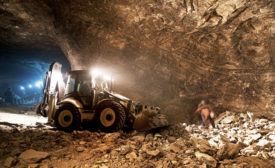Home » NIOSH research
Articles Tagged with ''NIOSH research''
A NIOSH Science Blog post
Occupational exposure to BPA in U.S. manufacturing companies
January 9, 2017
A NIOSH Science Blog post
Reducing whole body vibration to improve the safety and health of bus drivers
October 27, 2016
From the NIOSH Director's desk
Twenty years and counting: World-class research from the “L” building
October 7, 2016
From NIOSH Research Rounds
Neck pain linked to psychosocial and organizational risks at work
August 26, 2016
Never miss the latest news and trends driving the safety industry
eNewsletter | Website | eMagazine
JOIN TODAYCopyright ©2024. All Rights Reserved BNP Media.
Design, CMS, Hosting & Web Development :: ePublishing






